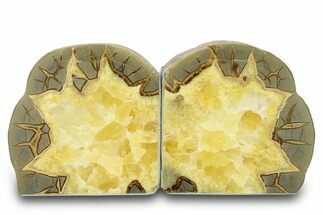This Specimen has been sold.
5.1" Natural, Native Copper Formation - Michigan
This is a natural formation of native copper mined on the Keweenaw Peninsula of Michigan. This native copper location is considered to be the most important as far as purity of the copper is concerned. Mining began here in 185.15, producing copper until around 1982. Over this period of time, over 7 million tons of refined copper were recovered from the Michigan copper mines. By the early 1900's, these mines led the world in copper production, with "Lake Copper" becoming the comparative purity standard for other refined copper.
It comes with an acrylic display stand.
It comes with an acrylic display stand.
Native copper is an uncombined form of copper that occurs as a natural mineral. Copper is one of the few metallic elements to occur in native form, although it most commonly occurs in oxidized states and mixed with other elements. Native copper was an important ore of copper in historic times and was used by prehistoric peoples.
Native copper occurs rarely as isometric cubic and octahedral crystals, but more typically as irregular masses and fracture fillings. It has a reddish, orangish, and/or brownish color on fresh surfaces, but typically is weathered and coated with a green tarnish of copper carbonate.
The mines of the Keweenaw Peninsula in Upper Michigan were major copper producers in the 19th and early 20th centuries, and are still the largest deposits of native copper in the world. Native Americans mined copper on a small scale at this and several other locations, and evidence exists of copper trading routes throughout North America among native peoples, proven by isotopic analysis. The first commercial mines in the Keweenaw Peninsula (which is nicknamed the "Copper Country" and "Copper Island") opened in the 1840s.
Native copper occurs rarely as isometric cubic and octahedral crystals, but more typically as irregular masses and fracture fillings. It has a reddish, orangish, and/or brownish color on fresh surfaces, but typically is weathered and coated with a green tarnish of copper carbonate.
The mines of the Keweenaw Peninsula in Upper Michigan were major copper producers in the 19th and early 20th centuries, and are still the largest deposits of native copper in the world. Native Americans mined copper on a small scale at this and several other locations, and evidence exists of copper trading routes throughout North America among native peoples, proven by isotopic analysis. The first commercial mines in the Keweenaw Peninsula (which is nicknamed the "Copper Country" and "Copper Island") opened in the 1840s.
SPECIES
Copper
LOCATION
Keweenaw Peninsula, Michigan
SIZE
5.1 x 3.4"
CATEGORY
ITEM
#249760
 Reviews
Reviews













